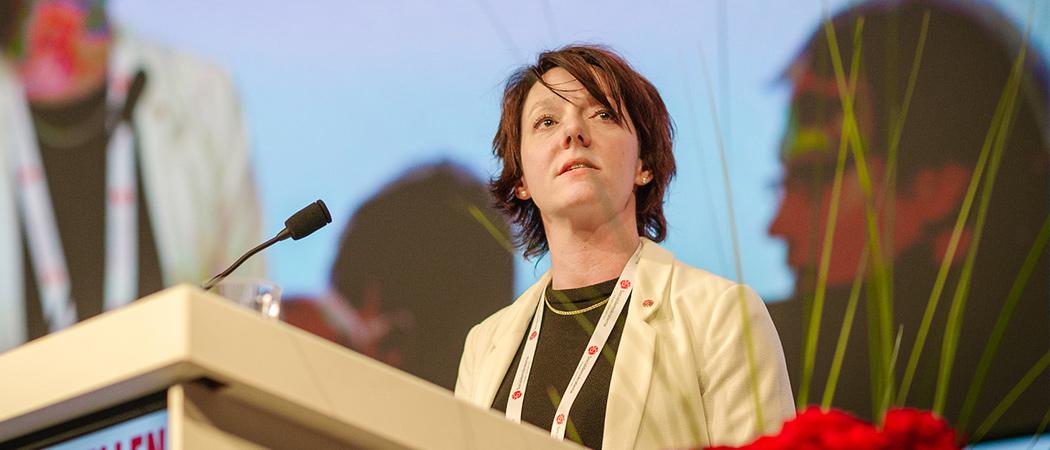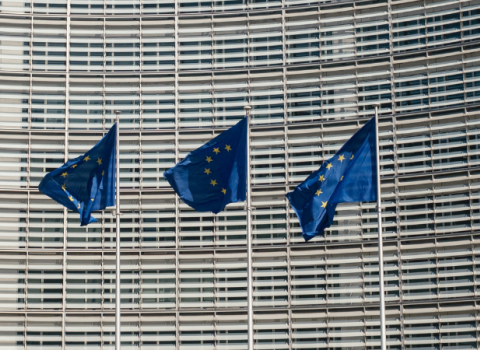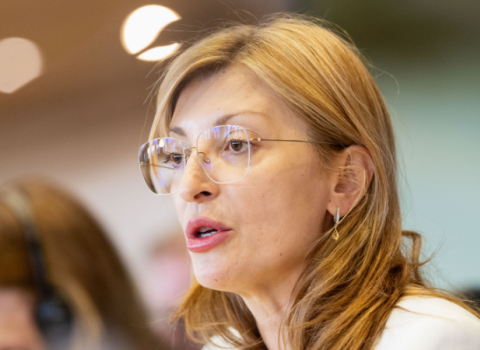Building a ‘European Research Area’ is a big ask. An EU conference shows just how tough it really is

Matilda Ernkrans, Minister for Higher Education and Research, Sweden. Photo: Anders Löwdin
For 21 years, Brussels has been trying to promote what it calls a European Research Area: an EU where “researchers, scientific knowledge and technology circulate freely”. At an EU conference 26-27 October, the idea got another push. But the obstacles to progress are still there, and that should matter to thousands of researchers and tech entrepreneurs across the bloc.
The ERA is intended to be a kind of single market for talent and ideas, matching up EU countries’ research policies and programmes, aiding cross-border cooperation, inter-continental competition and the general build-up of research capacity. The European Commission has said countries spend about €800 million each year, a modest amount given total R&D funding in the billions, on joint R&D programmes as a result of ERA efforts. But a hesitancy to further centralise research policymaking, boost national budgets or pick fights with an autonomous sector has made going further hard.
In 2018, EU governments agreed a reboot; and the current Commission is promising the new edition will ease national policy coordination and respond better to citizens’ needs, including those of researchers. So to get ministers talking about it, the Slovenian EU presidency hosted a conference online and at a castle near its capital, Ljubljana. Flatteringly titled as seeking a “Knowledge-Driven Society of the 3rd Millennium”, attendees' more humble task was to toss around ideas on how the recast might improve research facilities, careers, openness and economic benefits.
Those suggestions will be picked over at a lunch meeting of EU research ministers on 26 November. But really finishing the ERA needs commitment from across governments, as a lack of EU integration beyond research, like in social security and services, makes completing even the basics of it impossible. However, that was no barrier to research ministers telling the conference what it wanted to hear.
Promises, promises
Slovenia’s science minister, Simona Kustec, said she “more than strongly” supports a target for EU countries to invest at least 3% of national GDP in R&D, without acknowledging that Slovenia, like the EU as a whole, has consistently failed to meet it (the EU average is currently 2.2%, and Slovenia’s is 2%.) A non-binding pact, due to be signed as part of the new ERA’s rules later this year, is unlikely to change that.
Sweden, one of the few good students in the class, was eager to show how it can be accomplished. Its research minister, Matilda Ernkrans, won applause after telling the conference her government had increased its 2021 public research and innovation spending by nine times compared to the first year of the previous four-year budget. Speaking to Science|Business, she said the secret to the uplift was linking research funding to other political causes, like becoming “the first fossil-free welfare country” and reacting to COVID-19. That helps win over other political factions and the finance ministry. “If I want to have more money, more people need to know why”, she said.
Part of the problem is confusion about the idea. Like blind men describing bits of an elephant, there are as many answers to what the ERA is for as people you can ask. Walking between the two-hour workshops at the conference was a dizzying lesson in the complexity of aligning policy in what is already an anarchic sector at the national level.
But confusion on the ERA’s proper scope and scale comes from the top down, too.
Paul Rübig, a former MEP, spoke on a panel about how 2 billion people in the world have no access to clean drinking water. A tragedy, but not one that research integration can easily resolve.
The French research minister, Frédérique Vidal, responded to a question on international links by referring to the EU’s “strategic autonomy”, a concept as elastic as the ERA, but which always telegraphs the primacy of security and economic interests. Responding to the same question, Ernkrans emphasised instead the need for openness.
A workshop on careers heard staff from the Austrian and French research ministries veer off-topic and gesture to the generous piles of funding for excellent research at their respective market stalls.
How to move ahead?
All this makes the ERA a heavy political project to push forward. For now, keen researchers must depend on their host organisations to help them work with other European colleagues. Berthold Neizert of the Max Planck Society said in a panel that many such organisations act like the ERA already exists.
Helga Nowotny, the former head of the European Research Council, centred her keynote speech on the precarity of young researchers, suggesting they create their own stability near the frontier of science by founding start-up companies. More radically, she said researchers could be granted special status, like bankers or those in international organisations, to help them to carry employment benefits abroad. “Once you reach the age of 50 you are unable to move, mobility stops, because you cannot take your pension with you,” she told Science|Business.
But perhaps the most striking intervention came from Ernkrans, who said on a stage fronted by letters spelling out an ERA Twitter hashtag, that the abbreviation was “just another short word that no one outside this room knows”.
When something belongs to everyone and encompasses everything, no one takes ownership of it. Regardless of how its governance changes, without a wider fan base, the ERA may forever remain words on a page.
Ben Upton is a journalist specialised in European research and education policy.





 A unique international forum for public research organisations and companies to connect their external engagement with strategic interests around their R&D system.
A unique international forum for public research organisations and companies to connect their external engagement with strategic interests around their R&D system.